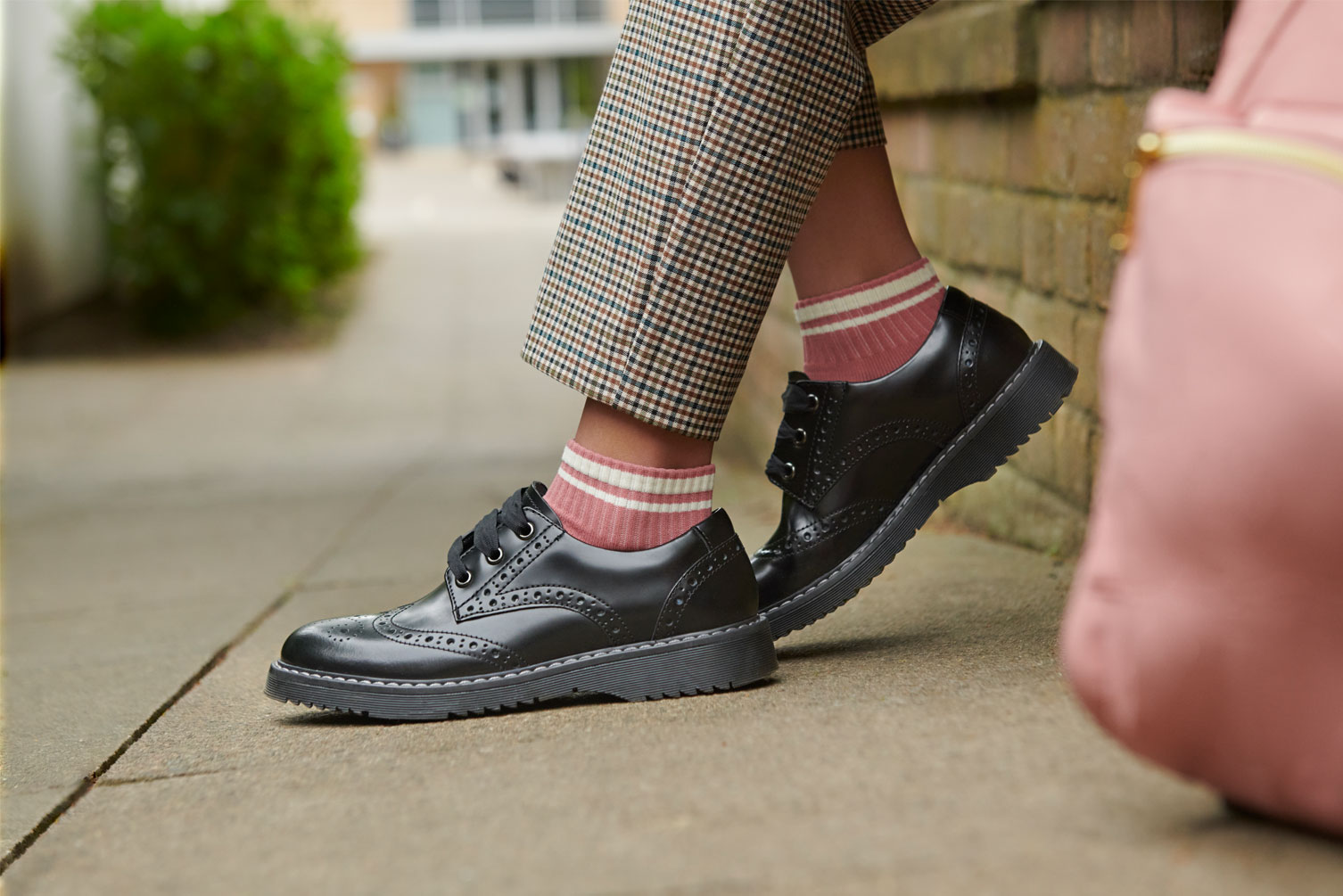
If you live in the UK, it’s inevitable that your shoes will get wet, and given that most shoes are made with leather ‘uppers’ for the best comfort and protection, it’s important to protect the leather. The ‘upper’ is the front, side and back part of the shoe and the linings inside. Other than our Start-Rite Vegan collection, Start-Rite wellies and Start-Rite summer canvas collection, all Start-Rite shoes have quality leather uppers. The integrity of this material is particularly important for comfort and flexibility during long school days, where children will be wearing their school shoes for over 1,200 hours a year!
Start-Rite leather school shoes are weather resistant, but leather is a natural material so it is not inherently waterproof. And given the nature of everyday life, leather isn’t just affected by the water it encounters, but also the salt, dirt and grease picked up through everyday wear can compromise its integrity. It is vital that our shoes are well looked after, so they can get wet and still do the important job of protecting children’s feet.
Leather is a wonderfully supple, natural material which makes it perfect for shoes. It can withstand damp, but over time excessive water will reduce the natural oils within the leather and cause it to become more stiff as a result. This stiffness can lead to wear and tear and compromise the leather’s ability to protect the foot or keep feet comfortable.
To protect your shoes and to get the longest usable life from them it’s important to look after the leather which includes drying them at your first opportunity and protecting the leather with polish or conditioner, to reinstate the oils and repel the water from penetrating.
Here is our step-by-step guide to protecting leather shoes from being damaged by too much water.
As soon as you are inside and able to remove your shoes, it’s important to remove any excessive water and debris from the outside of the shoe. If in extreme cases the water has penetrated into the inside of the shoe, then use newspaper rolled into balls to stuff inside the shoe to absorb excess water and protect the shape of the shoe from any shrinkage as the leather dries and potentially stiffens.
Leather will not respond well to being dried too quickly. While it’s tempting to speed up the drying process by using a hair dryer or putting shoes on top of a radiator, or in front of a fire, any direct heat can harm the leather and compromise the waterproof seal. Leather will respond better to being left near to warmth in a well-ventilated room to dry. If you are in a hurry, read more in our blog here about how to dry shoes quickly.
To get the best protection from our leather shoes, clean and polish regularly to keep the leather supple and to protect and conceal scuffs and scratches. Waterproof spray is a handy tool to give leather shoes added protection and we advise you to give them a weekly top up throughout the winter months.
If you are going to use Start-Rite Waterproof Protector Spray, preparation is important. To start with a clean shoe surface, first prepare the shoe with a polish using a soft, clean cloth and circular motions. Lighter strokes tend to make for a quicker result. Any mud, soil or dust will break down any of the existing water repellence. Here’s how to prepare your shoes for the Waterproof spray:
1. Remove the laces and lightly brush down loose dirt
2. Combine a little soap and water and gently rub away any scuffs you can see
3. Hold the can 15cm from the shoe and spray
4. Allow the shoes to dry naturally before wearing them
Encourage your child to take off their shoes properly. This will help them keep their shape and last longer. And we recommend involving the children in their shoe care too, to instil these habits early. By looking after your shoes the best you can, you will save money in the long run.
Author: Vista, published 22-02-2024.